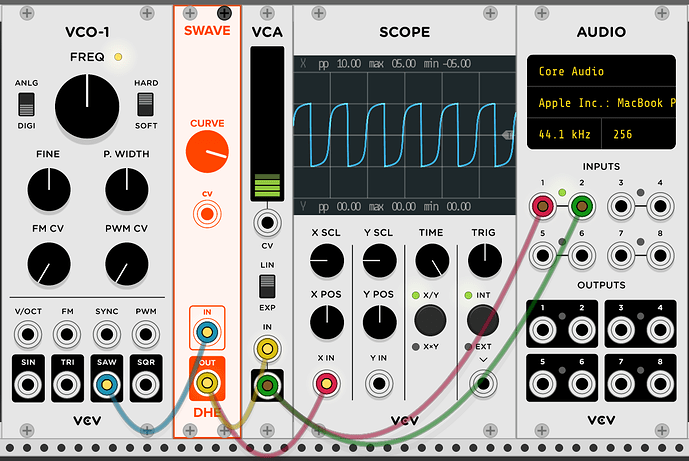I’m designing an oscillator & for one of my outputs I have a sine that I want to morph to a triangle, a lot of the other websites suggest that I use interpolation w a second oscillator & write a crossfader but I would prefer to be able to morph using an algorithm rather than use add another oscillator, is there a way I can go about implementing this, if anyone wants the code I’ve written so far I can post it.
Your module is computing f(t) = (1-p) \sin(t) * p \operatorname{triangle}(t), so there’s not really a way to get away with not computing both sin() and triangle(), directly or indirectly, unless p is 0 or 1.
I guess you could pre-compute a wavetable and use that. It “technically” gets rid of the interpolation at runtime. It also likely is not worth it.
Hmm, not really since you’d still have two wavetable oscillators. f(t) = (1-p) \textrm{wavetable}_1(t) + p \textrm{wavetable}_2(t).
You’d make a wavetable of the wavetables. Which would involve having to compute them for certain values of p. Then changes of increments of p use a different table-of-tables.
It would not be worth the rather heavy memory tradeoffs.
I forgot I made an account here, thanks for the input, kinda wanted to avoid having to make another oscillator but if that’s all I can do then so be it.
The question is equivalent to “interpolate without interpolation”. The answer is a falsology: “you can’t”.
Alright now that I have that question answered, my next one is if it’s possible to morph between a saw & a square without interpolation
I mean… no? Morphing between waveforms is pretty much going to be interpolation to some degree.
Dino Dini’s beautiful “normalized tunable sigmoid function” has a single parameter (k or curvature) and can be used as a transfer function to morph a sine, triangle, or saw into a square.
I created my Swave module to use that sigmoid function as a waveshaper. If you send in a sine, triangle, or saw wave, the CURVE knob will morph between the incoming signal and a very-nearly-square wave. Here it is transforming an incoming saw wave into something squarer:
To see the magic of this function, wire up this patch and connect SIN, TRI, or SAW into Swave’s IN port and turn the CURVE knob.
I played around a bit on desmos (see my first link, above), and couldn’t quickly find a way to morph between a triangle wave and a sine wave.
I wonder if one of the “fast sine approximation” formulas can be given a parameter that can linearize the curvy parts. I don’t have the math chops to figure it out.
